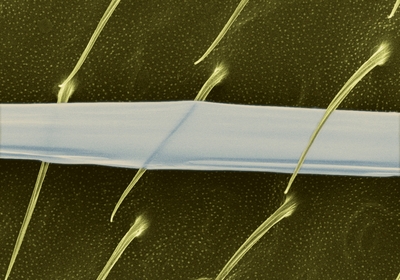Superthin spider silk could create sticky films and sensors
The brown recluse spider (Loxosceles recluse) produces superthin ribbons of silk, as opposed to the round fibres typically spun by spiders. In a world first, scientists have examined the silk and found that its properties may be suitable for a variety of applications.

The silk ribbons have the high strength and toughness of standard spider silk but also have a flat structure, making it possible to study the material’s molecular structure in great detail and investigate what gives it its strength. The researchers, from Oxford University and The College of William and Mary, reported their results in the journal Advanced Materials.
“All other silks are round, rope-like aggregates made up of many nanoscale filaments. This makes it virtually impossible to study in great detail the molecular structure of the silk itself and the fundamentals for its great toughness,” said Professor Fritz Vollrath of Oxford University’s Department of Zoology.

Professor Hannes Schniepp of The College of William and Mary said the researchers modified an atomic force microscope to measure the rigidity of a single recluse fibre. They found that the ribbons’ unprecedented adhesive properties are a result of their extreme thinness (up to 10 nm wide and 50 nm thick), combined with stiffness and the ability to adapt to the shapes of surfaces. The team also found that the surface of the silk ribbons is covered with tiny, dot-like bumps that may further enhance adhesion.
Silks are highly valued for their combination of great mechanical strength and excellent biological compatibility. The latest discovery may prompt their use in the development of super-sticky cling films, as well as the manufacture of thin-film electronic devices and sensors which could even be implanted in the human body.
Microplastics found to alter the human gut microbiome
Microplastic-treated cultures showed a consistent and significant increase in acidity (lower pH...
Sustainable, self-repairing, antimicrobial polymers developed
From medicine to electronics and optics, new materials developed by scientists at Kaunas...
A better way to create conductive polymers
New research disproves the longstanding belief that to create conductive polymers, substances...





